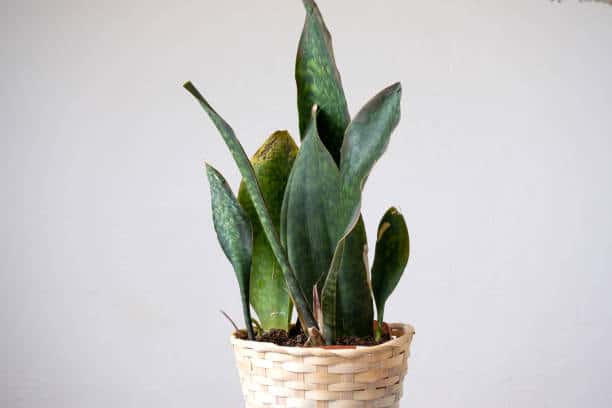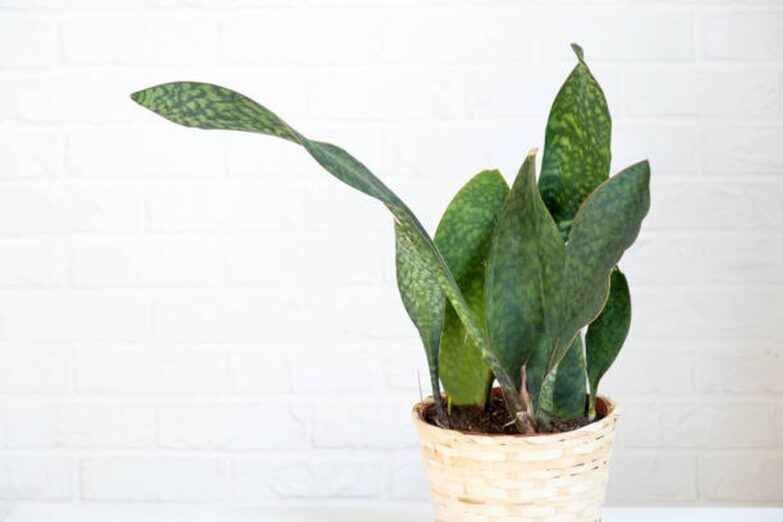The Whale Fin Sansevieria, also known as Sansevieria masoniana, is an increasingly popular houseplant that adds a unique and striking statement to any indoor space. With its dramatic, paddle-like leaves and low maintenance requirements, it’s no wonder that plant enthusiasts and interior decorators alike are drawn to this beautiful and exotic plant. In this ultimate guide, we’ll explore the origins of the Whale Fin Sansevieria, and its unique features, and provide expert tips for growing and caring for this stunning plant in your home.
Origins and Characteristics of the Whale Fin Sansevieria
The Botanical Background
Native to central Africa, specifically the Democratic Republic of Congo, the Whale Fin Sansevieria is a member of the Asparagaceae family. The plant has gained popularity as an indoor plant due to its unique shape, air-purifying qualities, and ability to thrive in various conditions. Its scientific name, Sansevieria masoniana, is a nod to Maurice Mason, an Englishman who first introduced the plant to Europe in the late 20th century.
A Striking Visual Statement
The Whale Fin Sansevieria boasts a singular and impressive appearance that sets it apart from other houseplants. Its broad, dark green leaves can grow up to four feet in length and have a distinct, mottled pattern with lighter green spots. The leaves unique shape resembles a whale’s fin, hence the plant’s common name. As the plant matures, it develops a fan-like growth pattern, with new leaves emerging from the center of the plant, adding even more interest and visual appeal.
Growing Conditions for Whale Fin Sansevieria
Light Requirements
Whale Fin Sansevierias are adaptable when it comes to lighting conditions, making them an ideal choice for various indoor environments. They can tolerate low light, but for optimal growth and vibrant leaf color, it’s best to provide them with bright, indirect light. Avoid exposing the plant to direct sunlight for extended periods, as this can cause the leaves to scorch and lose their vibrant color.
Temperature and Humidity
Whale Fin Sansevierias prefer temperatures between 65°F and 80°F (18°C and 27°C). They can tolerate short periods of cooler or warmer temperatures, but it’s essential to protect them from drafts or sudden temperature changes, which can stress the plant. These plants prefer moderate humidity, so there is typically no need to provide additional humidity in the average home. However, if your indoor environment is exceptionally dry, you can increase the humidity by placing a tray of water with pebbles near the plant or using a room humidifier.
Planting and Potting Your Whale Fin Sansevieria
The Right Soil Mix
Whale Fin Sansevierias thrive in well-draining soil. A mixture of equal parts potting soil, perlite, and coarse sand or pumice works well. Alternatively, you can use a commercial cactus or succulent mix. The key is to ensure that excess water drains away quickly, as these plants are susceptible to root rot if left in soggy soil.
Selecting the Perfect Pot
Choose a pot that is slightly larger than the root ball of your Whale Fin Sansevieria. A heavy pot made of ceramic or terracotta is ideal, as it will provide stability for the large leaves and prevent the plant from tipping over. Ensure the pot has drainage holes to prevent water from collecting at the bottom.
Watering and Fertilizing Your Whale Fin San
Watering Routine
Whale Fin Sansevierias are drought-tolerant plants, which means they require less frequent watering than many other houseplants. It’s essential to allow the soil to dry out between waterings to avoid overwatering and root rot. In general, water your plant every 2-3 weeks during the growing season (spring and summer) and reduce watering to once a month during the cooler months (fall and winter). To water your plant, soak the soil thoroughly and allow any excess water to drain away completely.
Fertilizer Needs
Whale Fin Sansevierias are not heavy feeders, so fertilizing is not a frequent requirement. To support healthy growth, you can apply a balanced liquid fertilizer diluted to half strength every 4-6 weeks during the growing season. Avoid over-fertilizing, as this can cause the leaves to become soft and lose their rigidity.
Pruning and Propagation of Whale Fin Sansevieria
Pruning Tips
Pruning is generally not necessary for Whale Fin Sansevierias, as they are slow-growing plants. However, if you need to remove damaged or dying leaves, use a clean, sharp pair of scissors or pruning shears and cut the leaf off at the base. Be sure to clean the cutting tool with rubbing alcohol before and after pruning to prevent the spread of diseases.
Propagation Methods
There are two primary methods for propagating Whale Fin Sansevieria: leaf cuttings and division.
- Leaf Cuttings: To propagate using leaf cuttings, carefully remove a healthy leaf from the base of the plant. Allow the cut end to dry and callous over for a day or two. Then, plant the cutting in a well-draining soil mix, with the cut end buried about 1-2 inches deep. Place the cutting in a warm, bright location, and keep the soil slightly moist until new growth emerges.
- Division: Division is best done when repotting your Whale Fin Sansevieria. Carefully remove the plant from its pot and gently separate the root ball into smaller sections, each with at least one healthy leaf and a portion of the root system. Plant each division in a well-draining soil mix, and follow the regular care instructions for the parent plant.
Common Issues and Solutions

Yellowing Leaves
Yellowing leaves are often a sign of overwatering, which can lead to root rot. Ensure that you’re allowing the soil to dry out between waterings, and check the drainage holes in your pot to ensure they are not blocked.
Leaf Curling or Wrinkling
Curling or wrinkling leaves may indicate underwatering or exposure to extreme temperatures. Check your watering routine and ensure that your plant is not exposed to drafts, heat vents, or direct sunlight.
Pests
Whale Fin Sansevierias are relatively pest-resistant, but they can occasionally attract pests like mealybugs or spider mites. If you notice any pests on your plant, treat the infestation promptly by wiping the leaves with a solution of water and mild dish soap or using an insecticidal soap or neem oil.
Conclusion
The Whale Fin Sansevieria is a stunning and unique addition to any indoor garden. With proper care and attention to its light, water, and soil requirements, this low-maintenance plant will reward you with its striking appearance and air-purifying properties for years to come. Follow this ultimate guide to growing and caring for your Whale Fin Sansevieria, and enjoy the beauty and elegance it brings to your space.

